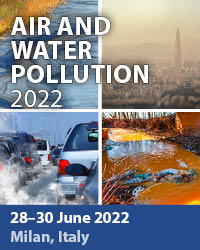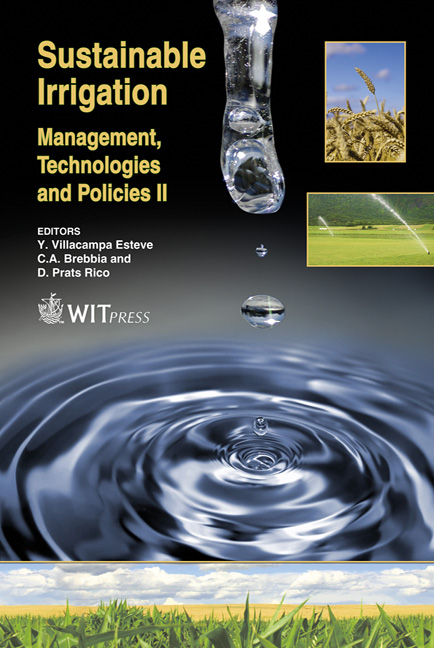Filter And Emitter Performance Of Micro-irrigation Systems Using Secondary And Tertiary Effluents
Price
Free (open access)
Transaction
Volume
112
Pages
10
Page Range
361 - 370
Published
2008
Size
348 kb
Paper DOI
10.2495/SI080351
Copyright
WIT Press
Author(s)
M. Duran-Ros, J. Puig-Bargués, J. Barragán, G. Arbat & F. Ramírez de Cartagena
Abstract
The performance of four filtration systems (sand, screen, disc and a combination of screen and disc) and six emitter types (four pressure compensated and two non-pressure compensated), using secondary and tertiary effluents from a wastewater treatment plant, was studied for 1000 h. Only sand filtration significantly reduced turbidity and suspended solids. The best emission uniformity was obtained by the emitters placed after the sand filter and the screen filter with the secondary and tertiary effluent, respectively. On the other hand, emitters that operated with disc filters showed the worst emission uniformity for both effluents. Emitter type P2 was the only one achieving values of emission uniformity higher than 90% with all filtration systems and effluents except the screen filter and the tertiary effluent. Keywords: wastewater, drip irrigation, filtration, clogging. 1 Introduction The use of effluents in agriculture is a viable alternative in areas where water is scarce or there is strong competition for its use. The best way to apply effluents, from public health and environmental points of view, is micro-irrigation [1]. The main problem when using effluents in drip irrigation systems is emitter clogging [2] because the reduction of emitted flow affects water distribution and,
Keywords
wastewater, drip irrigation, filtration, clogging.





